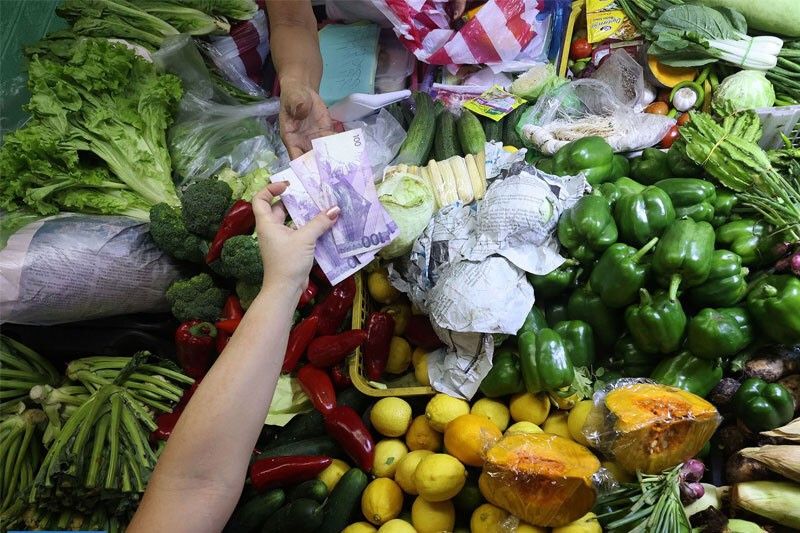Philippine inflation unexpectedly slows in February

MANILA, Philippines (Updated 10:46 a.m.) — Inflation unexpectedly eased in February, bringing good news for policymakers that have been struggling to control soaring prices that have forced millions of Filipinos to tighten their belts.
Inflation, as measured by the consumer price index, quickened to 8.6% year-on-year last month, the Philippine Statistics Authority reported Tuesday. This was slower than the 8.7% print recorded in January.
The February reading, while just a tad lower compared to the preceding month, crushed expectations of a faster inflation. The Bangko Sentral ng Pilipinas had admitted that price growth likely exceeded 9% last month, while a BusinessWorld poll of economists yielded a median forecast of 8.9%.
READ: No reprieve as BSP sees February inflation breaching 9%
It remains to be seen whether inflation already reached its much-awaited peak in February, but the next task for the government is to sustain the downtrend. In the first two months of the year, inflation averaged 8.6%, soaring above the state’s 2-4% annual target.
Since May last year, the BSP has hiked its policy rate by a total of 400 basis points to tame resurgent demand and bring it in line with limited supply. Governor Felipe Medalla had said the central bank still has room to raise the key rate, believing that the economy is strong enough to absorb additional tightening of monetary policy.
READ: BSP steps up attack on stubbornly high inflation; hikes rates by 50bps
“… By March, we expect inflation to be firmly on a downtrend, sans any additional outside shocks,” Domini Velasquez, chief economist at China Banking Corp., said.
More rate hikes?
National Statistician Claire Dennis Mapa attributed the softer headline price growth to easing transport inflation.
However, food inflation sustained its ascent to 10.8% year-on-year last month. Overall, 9 out of 13 commodity groups used to compute inflation posted faster price uptick last month.
In a statement, the BSP said inflation “continues to be driven by supply-side factors”, although data showed there are still some upward price pressures from strong consumer demand.
Core inflation, which excludes volatile items to get a cleaner reading of underlying price trends that are affected by demand conditions, sizzled 7.8% year-on-year, faster than the January outturn of 7.4%.
That said, experts like Jun Neri, lead economist at Bank of the Philippine Islands, believe that while the February inflation “is very likely the peak”, a new round of rate hike is still on the table once the Monetary Board meets on March 23.
“We can't rule out another 50 bps (increase). A 25-bp hike is more likely though,” Neri added.
Nicholas Antonio Mapa, senior economist at ING Bank in Manila, said the surging core inflation “showcases how broad-based inflation has become,” which could compel the central bank to lift rates higher.
“Slower inflation on the back of softer transport and utilities is welcome but worrisome was the continued acceleration in food inflation as supply side remedies have yet to deliver any relief,” he added.
Rethink
While the headline rate softened, the urgency to bring painfully-high inflation back to comfortable levels remains. In the National Capital Region, inflation jumped 8.7% year-on-year, beating the national figure.
The problem with elevated prices was magnified for the country’s poorest, as inflation for the bottom 30% of households hit 9.7% year-on-year.
The BSP said inflation could remain above-target until the final quarter of the year. For National Economic and Development Authority (NEDA) Secretary Arsenio Balisacan, the government “must rethink our strategies” to prevent inflation from throwing more Filipinos into poverty.
“Agricultural imports were ill-timed and food supplies have been inadequate. The solution is to get to the root of the problem, including fixing the bottlenecks along all segments of the agricultural value chain,” he said.
“We must immediately address this issue if we are to remain on track to meeting our poverty reduction targets for the medium term,” he added.
RELATED VIDEO:
- Latest
- Trending





























